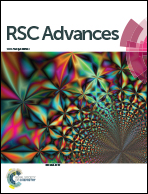Floc structural characteristics of ferrum-polymer dual-coagulant for treatment of synthetic dyes wastewater: effect of solution pH, hardness and ionic strength
Abstract
In this study, a cationic lignin-based flocculant (LBF) was prepared and used with polyferric chloride (PFC) to treat disperse and reactive dyes wastewater. The effects of dosage, initial pH, hardness and ionic strength on the interactions and floc properties were studied. Results showed that hydroxyl and quaternary ammonium groups of LBF could combine with –NH– and sulfo groups of dyes. Large flocs with extended structure were formed due to the absorption bridging and charge neutralization effect of LBF. The maximum color removal ratios achieved by PFC + LBF dual-coagulant were 94.1% and 95.6% in the treatment of disperse yellow and reactive blue wastewater, respectively. Solution pH had a significant effect on floc size and compactness by the variance of Fe(III) hydrolysates and charge of LBF. Moderate hardness and ionic strength both could improve floc properties but the mechanisms were different: Ca2+ ions could combine with hydroxyl and sulfo groups to produce chelates and decrease the electric repulsion simultaneously, Na+ ions only compressed the electric double layer. Excess hardness and ionic strength showed a slight influence because of the limited binding sites and strong electric repulsion, respectively.



 Please wait while we load your content...
Please wait while we load your content...